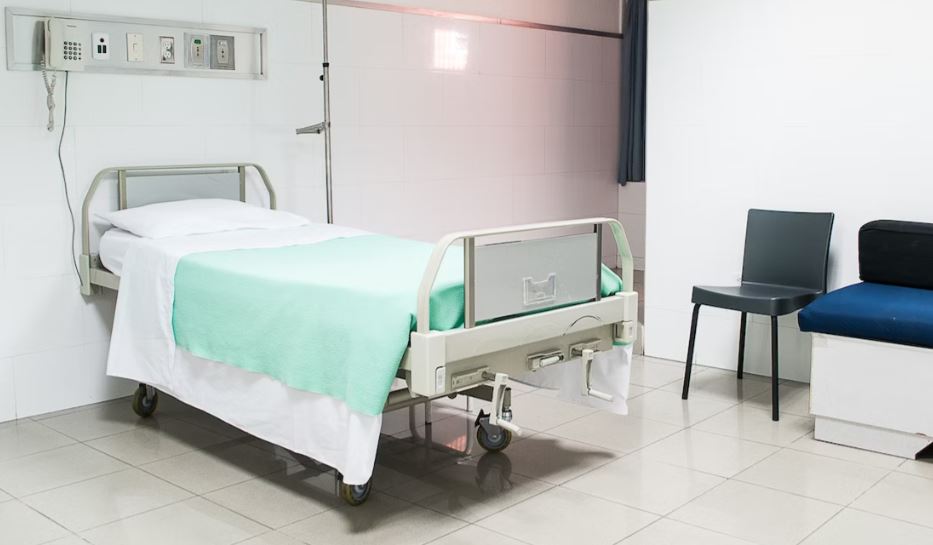- Proper hand hygiene is essential in healthcare facilities. This prevents the spread of infections.
- Clean surfaces and equipment regularly with disinfectants, UV light technology, or other measures.
- Healthcare workers need to be vaccinated against infectious diseases like influenza, hepatitis B, and COVID-19.
- Medical waste like gloves and gowns must be appropriately segregated, contained, transported, and disposed of.
- Implement an effective pest control program to prevent the entry of pests into the facility.
Sanitation and hygiene are two of the most important things to consider in modern healthcare facilities. These are necessary to prevent infection and disease among patients, visitors, and healthcare workers.
However, despite the importance of proper sanitation and hygiene, many facilities still struggle with maintaining a clean and safe environment. This blog will teach you about sanitation and hygiene in modern healthcare facilities.
Proper Hand Hygiene is Essential
Proper hand hygiene is one of the fundamental ways to prevent the spread of infections in healthcare facilities. All healthcare workers should follow the Centers for Disease Control and Prevention’s (CDC) hand hygiene guidelines. This includes washing hands with soap and water or using alcohol-based hand sanitizers before and after caring for patients. Proper hand hygiene is also important for visitors, patients, and their families.
Clean Surfaces and Equipment Regularly

Another important aspect of sanitation and hygiene in healthcare facilities is the regular cleaning of surfaces and equipment. This includes floors, walls, tables, chairs, medical equipment, and other commonly used items. Regular cleaning with appropriate disinfectants can help reduce the risk of infections.
Additionally, modern healthcare facilities should also utilize technology to keep tools and equipment clean. One such piece of technology is a UV light disinfection machine. This machine can significantly reduce the risk of infections in healthcare facilities. This device uses ultraviolet (UV) light to sanitize surfaces, equipment, and other items. UV light kills bacteria, viruses, fungi, and other microbes that may be present on these surfaces or equipment.
Encourage Vaccination for Healthcare Workers
Healthcare workers are at a higher risk of getting infections due to their job responsibilities. They are also at risk of passing on the infection to patients. Vaccines can significantly reduce the risk of getting infected or passing on the infection. Healthcare facilities should promote and encourage their staff to get vaccinated against infectious diseases like influenza, hepatitis B, and COVID-19.
Proper Disposal of Medical Waste is a Must
Proper disposal of medical waste is essential to prevent the spread of infections in healthcare facilities. Medical waste includes items such as sharps, gloves, gowns, and other materials that are contaminated with blood, body fluids, or other potentially infectious materials. Healthcare facilities must follow guidelines for the disposal of medical waste. The guidelines are as follows:
Segregation
Segregation is the process of separating different types of medical waste. This helps reduce the risk of contamination from one kind of waste to another.
Safe Collection and Containment

Medical waste must be collected and contained in a safe manner. Appropriate containers should be used for containment, such as sharps containers, biohazard bags, or other sealed containers that are clearly labeled with the words “Biohazard”.
Safe Transport
Medical waste must be transported in a safe manner to prevent any potential contamination. Appropriate vehicles and personnel should be used to transport medical waste. The vehicles should also have proper safety measures such as spill kits, protective gloves, and other necessary equipment.
Proper Disposal Methods
Once the medical waste has been safely collected, contained, and transported, it must be properly disposed of. Different types of medical waste require different methods of disposal. Some examples include incineration, autoclaving, chemical disinfection, and landfill disposal.
Proper disposal of medical waste is essential for maintaining a safe and healthy environment in healthcare facilities.
Effective Pest Control is Required
Pests can carry diseases and contaminate surfaces and equipment. Healthcare facilities must have a pest control program in place to prevent the entry of pests within the facility. This includes regular inspections, treatment, and monitoring of the environment to avoid pest infestation. Pest control programs should also have proper sanitation and hygiene measures to help reduce the risk of pest infestations.
From proper hand hygiene to effective pest control, sanitation and hygiene in modern healthcare facilities are paramount. Following the CDC’s guidelines for hand hygiene, cleaning surfaces and equipment regularly, encouraging vaccinations among staff members, properly disposing of medical waste, and implementing an effective pest control program can help reduce the risk of infections in healthcare facilities. These tips will ensure that your facility remains clean and safe while providing quality care to its patients.




